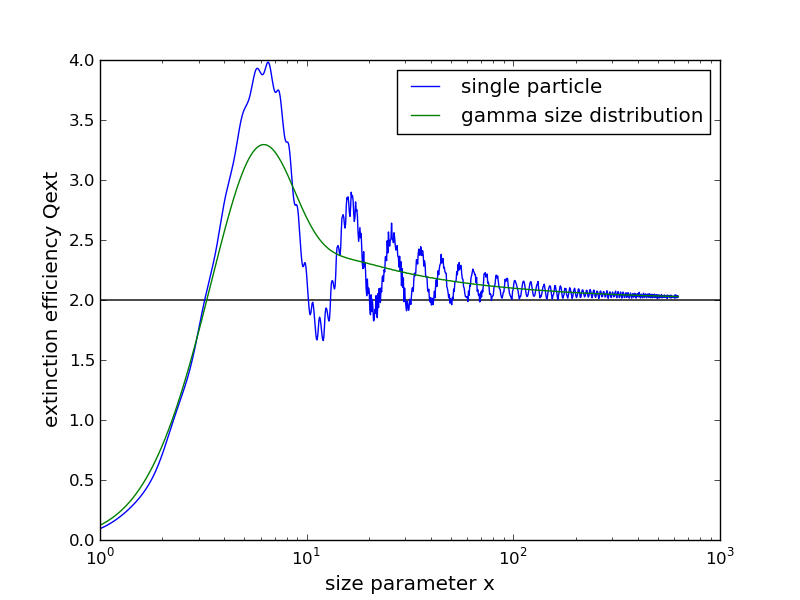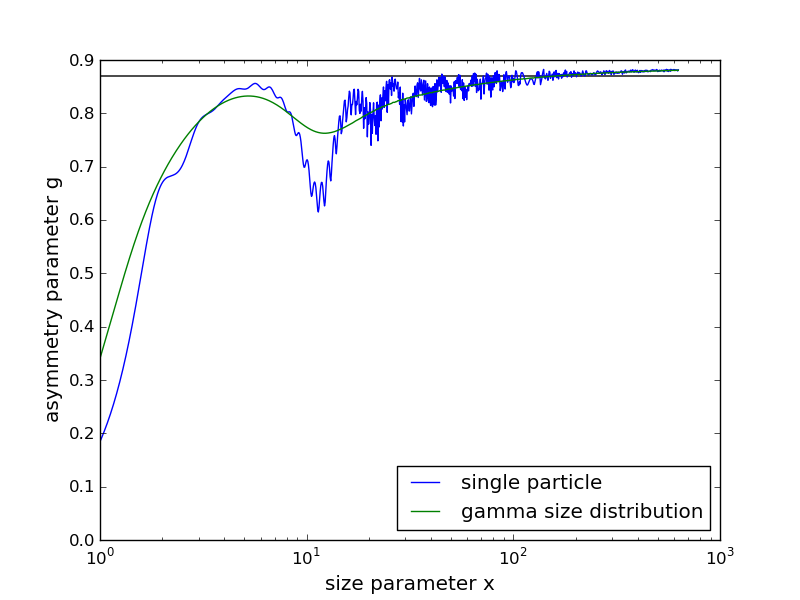Sidebar
Extinction efficiency for single particle and for particle size distribution
Perform a Mie calculation for the size parameter range from 1 to 1000 for a single sphere with a radius of 10 µm. Plot the extinction efficiency as a function of size parameter and describe the result.
Perform another Mie calculation for a gamma size distribution with an effective variance of 0.1 and again plot the extinction efficiency as a function of size parameter. Which differences do you observe compared to the single particle?
In order to obtain the extinction efficiency for a size distribution, the Mie code (src/mie.c) requires a small modification (please contact Claudia!).


The oszillations (ripple structure and also major maxima and minima) in the results for the single droplet (higher order terms in Mie series) are averaged out when integrating over a size distribution.

